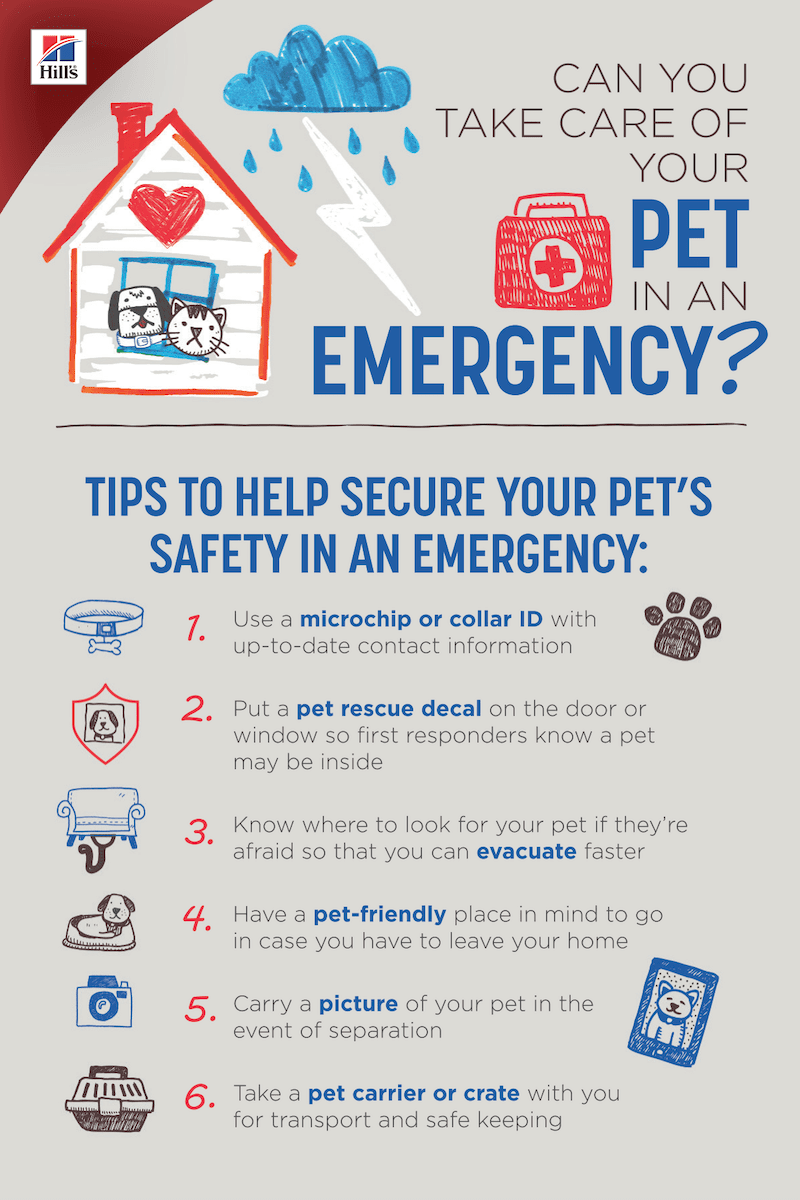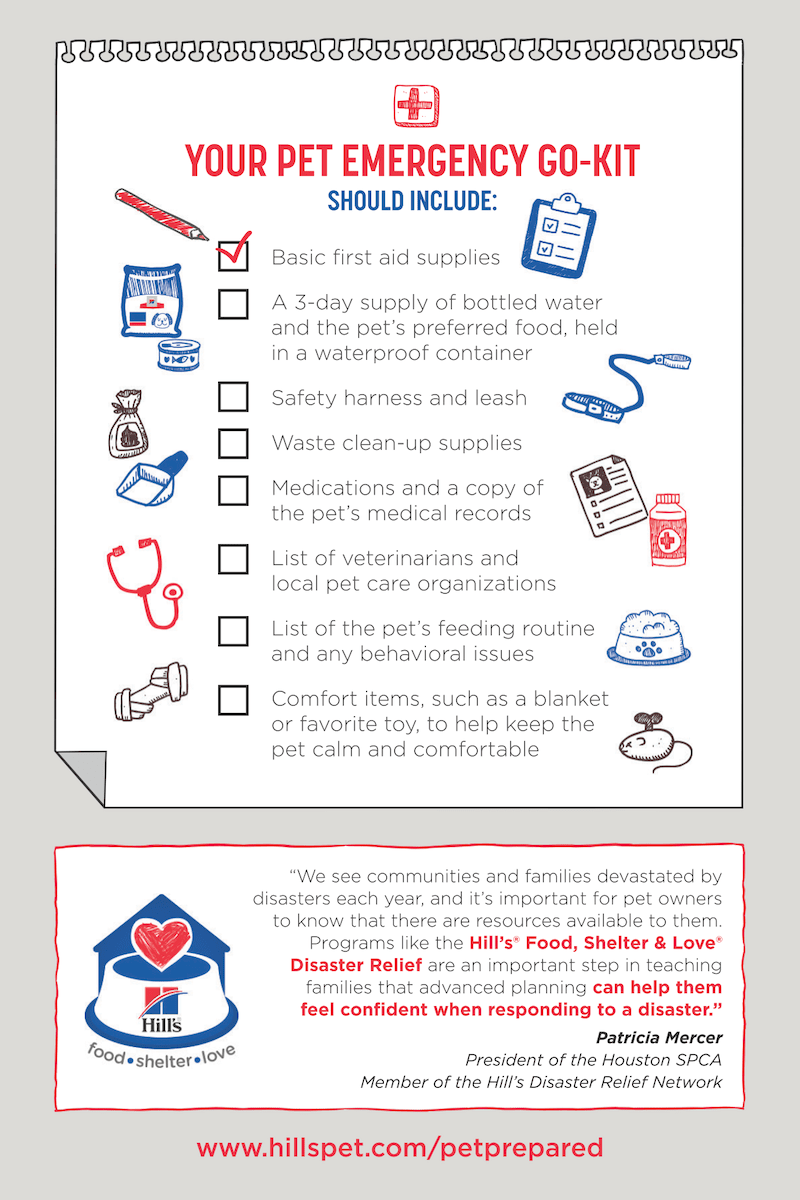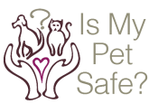Disaster Preparedness Is For Pets Too!

Natural and other disasters can strike unexpectedly and it’s important to be prepared. Though many families have set up plans for emergencies, they can often forget to include the furriest family members: the pets. When emergencies do strike, pet parents can be left in a panic over what to prioritize for their pets or what to do if they become separated.
Video:
May 14, 2016 is designated "National Animal Disaster Preparedness Day" by the US Federal Emergency Management Agency (FEMA). When people hear 'FEMA' they immediately think of large natural disasters like floods, hurricanes or tornados. Families that do not live in areas subject to those type of events often let their guard down. However, emergencies can also be man made - a fast moving fire in a condominium complex or a train derailment involving hazardous chemicals are just two such events.
As there are many good primers and check lists on the net to help pet parents get a paw up on updating their own emergency plans to included pets, I will not try to recreate what has already been done. Two good sources are Ready.gov and Hills Pet Nutrition. Hills is leading out reach on emergency preparedness by partnering with 65 of the more than 800 shelters they provide regular and emergency assistance. I reprint below, with their permission, two graphics that all pet parents should review.
Click to enlarge
Click to enlarge
I would though like to accentuate three important points:
- Always use a harness during an emergency.
- Pets can be especially skittish during an emergency and slipping out of a collar is a real possibility that could lead to the loss of your furry friend. If you do not use a harness on a regular basis, ask for help at your local pet store to select one for your dog or cat and get instruction on how to adjust the fit properly. In an emergency, you may still need to use a lead to hold your pet as you or another family member puts them in their harness.
- Have multiple photos.
- My own belief is you should have at least two photos - the classic smiling head shot and also a full body profile, standing if possible. The combination of the two makes it easier for searchers or passers-by to make a positive identification of your missing pet. Pet parents should also keep a backup printed copy in their car glove box or in their wallet or purse. Do not rely just on a cell phone or emergency kit which can be lost or damaged.
- Preprint a few "lost pet" flyers.
- Leave the location and contact details open to be filled in by hand when necessary. The last thing you want to be doing during or just after an emergency is trying to find a working printer to create and print these posters. Keep copies in both your human and pet emergency kits.
Medical Issues and Emergency Care
Where I felt ismypetsafe.com could really help on this subject is on the issue of special medical needs and emergency care. To that end, I was happy to have the opportunity to present a number of questions to veterinarian Dr. Ellen Lowery and Patricia Mercer, President of the Houston SPCA. The embedded video above captures the complete interview.
Medicines
Many of our older pets, like their pet parents, may be taking prescription medicines. Ideally, your emergency kit will contain those medicines because you either remembered to grab the existing bottle off the counter top or have prestocked the kit (being mindful of expiration dates). But what if that supply runs out or is forgotten? What if the pet family is displaced for a long period of time and/or in an unfamiliar location?
Dr. Ellen Lowery advises that pet parents make sure to include in their emergency kit an up to date list of all the medicines (and dosages) taken by their pets and also the name and contact information for their primary vet. I recommend including a photocopy of the most recent diagnosis or evaluation so that timely information can be provided to any unfamiliar attending veterinarian.
A life or death situation may also arise if medications like insulin are forgotten, lost or just run out. In this case, pet parents should seek out emergency care at the nearest animal shelter or clinic. If unable to provide immediate assistance, they should be able to direct you to the correct location.
Some medications, like insulin, should be refrigerated. In a disaster, this may prove impractical or only possible for a short period of time. Pet parents should start by keeping a cold pack along with a zip loc bag in their freezer just for use in their pet emergency kit. Also, an insulated bag can be clipped to the strap of the primary kit. After you leave the immediate danger area, if the cold pack loses its effectiveness you will need to find another way to cool the medicines, such as ice in the zip loc bag. If ice is scarce, use a bag of frozen peas or corn.
You should also discuss with your pet's prescribing veterinarian at what maximum temperature they feel the medicine should no longer be used. Keep in mind that some medicines cannot be chilled again because heat changes their composition. And when all else fails, seek out help at a local animal shelter.
CKD pets may require intravenous fluids, cats in particular. This is another special situation in a disaster/evacuation that requires preparation. Make sure to include dispensing equipment with the emergency kit as well as fluid packs. If the pet parent does not know how to dispense fluids, Dr. Lowery advises
Typically in a disaster situation there are an emergency relief network of personnel, there are specially trained veterinarian health care teams, shelter personnel that are going to be prepared in case of those emergencies. They are going to have the set up that is needed to be able to provide intravenous medications, fluids, subcutaneous fluids, anything that they are going to need on a triage basis to make sure the pets are going to be kept safe and as healthy as possible.
Emergency Care
Try as we may to remain calm, evacuations often become chaotic and most of our pets are much smaller and less visible than humans, even children. A pet may be stepped on, run into or burned. In these situations, a pet parent may need to act as a first responder to treat an injured pet. For this reason, pet parents should keep a pet first aid kit handy. The items in the kit are NOT the same as in a human first aid kit, bandages in particular.
The Humane Society has a good check list and the American Vet. Medical Association (AVMA) has an emergency care instruction pamphlet pet parents can print out and keep in the kit. PetMD has a checklist of procedures for treating burns that can also be printed and kept with the kit. Familiarize yourself with and practice first aid procedures prior to an actual emergency.
Dr. Lowery recommends pet parents to be careful and cautious when administering first aid as the pet may be afraid, in severe pain and could bite. Keep the patient as comfortable as possible and go to the nearest vet clinic or rescue shelter as soon as possible. If you know the area you are likely to deploy to in an emergency, keep a list of area shelters and vets with your pet's kit.
It is not uncommon for pets to be prescribed sedatives to relieve anxiety, for example during thunderstorms. Pet parents should discuss if sedatives are recommended for their pet and when it is appropriate to administer. Only give your pet sedatives specifically prescribed for them as some sedatives are contra indicated for certain medical conditions or in the presense of other medications.
Be Prepared!
Clearly, emergency/disaster preparedness is more than a 15 minute Sunday afternoon chore. But the time and thought that families put into assembling evacuation and first aid kits before they are needed can save a pet's life during a real emergency. So please take this weekend to begin planning and assembling yours.




